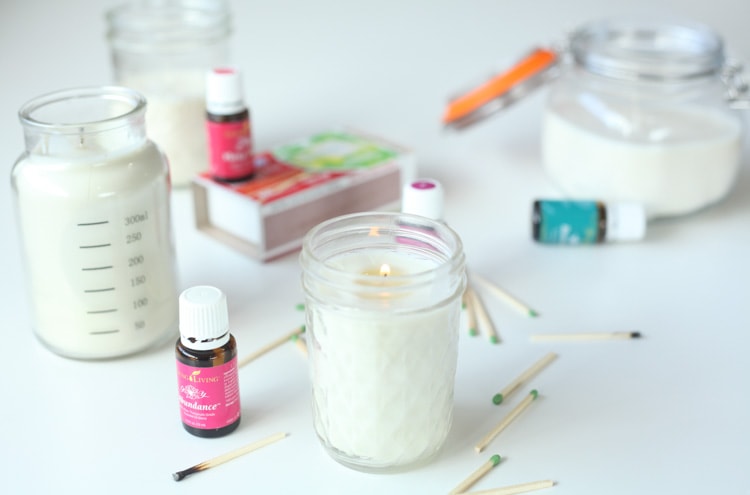Candle-making is an art that extends beyond wax and wick; it’s also about crafting captivating scents that enhance ambiance and evoke emotions. Scent oils play a pivotal role in this process, offering a myriad of aromatic possibilities. From selecting the right notes to mastering measurements and blending techniques, this guide will delve into everything you need to know to create candles with exceptional scent throws.
Understanding Fragrance Notes

Fragrance notes are the building blocks of scents, typically categorized into three layers: top, middle, and base notes. Top notes are the initial impression of a fragrance, often light and refreshing, such as citrus or herbal scents. Middle notes, also known as heart notes, form the body of the fragrance, providing depth and character with floral, fruity, or spicy aromas. Base notes are the foundation, offering richness and longevity, often comprising woody, musky, or resinous elements. When selecting fragrance oils, consider the balance of these notes to achieve a harmonious scent profile.
Selecting Fragrances
Selecting the perfect fragrance oils for candle making is a crucial step in creating candles that captivate the senses and evoke desired moods or atmospheres. With an array of scents available, ranging from floral and fruity to woody and spicy, choosing the right fragrances requires careful consideration of factors like personal preference, target audience, and the intended use of the candles – whether it’s for relaxation, aromatherapy, or special occasions—and tailor your fragrance oils selection accordingly. Here are a few points to help you navigate the selection process:
Understand Your Audience
Consider who will be using your candles. Are they meant for relaxation, meditation, or to create a cosy atmosphere? Understanding your target audience’s preferences and demographics can help you narrow down the fragrance options.
Research Market Trends
Stay updated on current market trends in the candle industry. Certain scents may be more popular during specific seasons or trending due to cultural influences. Researching what fragrances are in demand can give you valuable insights into what customers are looking for.
Consider Seasonality
Different scents are associated with different seasons. For instance, floral and fruity scents are often preferred during spring and summer, while warm and spicy fragrances are popular in fall and winter. Adapting your fragrance selection to match the season can attract customers seeking seasonal scents.
Experiment with Combinations
Don’t be afraid to experiment with fragrance combinations to create unique and enticing blends. Mixing complementary scents can produce complex aromas that stand out from standard single-note fragrances. Keep track of your experiments to replicate successful blends in the future.
Test Before Committing
Before purchasing large quantities of candle fragrance oils, it’s essential to test them in small batches of candles. This allows you to evaluate how the scents perform when mixed with wax and burned. Pay attention to scent throw (the strength of the fragrance when the candle is burning) and how well the scent fills a room.
Quality Matters
Invest in high-quality fragrance oils to ensure a superior scent experience for your customers. Lower-quality oils may produce weaker scents or unpleasant odours when burned. Research reputable suppliers known for providing top-notch fragrance oils that meet safety standards for candle making.
Personalize Your Selection
Infuse your candle line with a personal touch by selecting fragrances that resonate with your brand’s identity or story. Whether it’s a signature scent inspired by nature or a nostalgic fragrance reminiscent of childhood memories, choosing scents that reflect your brand’s essence can help create a memorable experience for customers.
Measuring and Blending Fragrance Oils

Precision is key when measuring fragrance oil to ensure consistency and potency in your candles. Use a digital scale to measure oils accurately, following recommended guidelines provided by suppliers or fragrance calculators. When blending multiple oils, start with small test batches to gauge compatibility and adjust proportions accordingly. Keep meticulous records of your recipes for future reference and refinement.
How Do You Make High-quality Scented Candles?
Scent throw refers to the strength and diffusion of fragrance when the candle is burning. Several factors influence scent throw, including the quality of fragrance oils, wax type, wick size, and container design. To optimize scent throw, use high-quality fragrance oils specifically formulated for candle-making, choose a wax that effectively absorbs and releases scent, select an appropriate wick size based on container diameter, and consider factors like room size and airflow when burning candles.
Tips for Enhancing Scent Throw
• Allow candles to cure: Let candles rest for at least 24-48 hours after pouring to allow the candle fragrance oil to fully incorporate into the wax.
• Proper wick trimming: Trim wicks to the recommended length (usually around 1/4 inch) before each burn to prevent soot buildup and ensure even combustion.
• Test burn: Conduct thorough burn tests to assess scent throw, burn pool, and overall performance before introducing new fragrances to your product line.
• Rotate stock: Keep your inventory fresh by rotating stock regularly to maintain fragrance potency and quality.
• Engage customers: Encourage feedback from customers to gauge scent preferences and refine your product offerings accordingly.
Stay Flexible and Evolve
As consumer preferences and trends change over time, be prepared to adapt your fragrance selection accordingly. Keep an eye on emerging scent trends and be open to refreshing your candle line with new fragrances to stay relevant in the market. Mastering oils for candle-making requires a blend of creativity, precision, and experimentation. By selecting the right scents, you can create candles that delight the senses and elevate any space. With dedication and attention to detail, you’ll craft candles that leave a lasting impression on customers and enhance their everyday experiences.

Leave a comment